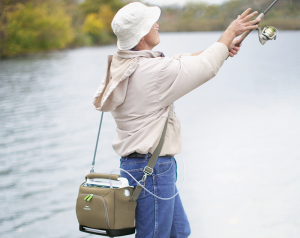For oxygen therapy patients, there was a time when many faced using bulky, cumbersome, and inconvenient oxygen tanks, bottles, and liquid oxygen. These items needed to be refilled regularly.
As a result, the patient's ability to be out and about was limited.
Portable oxygen concentrators (POCs) have brought these patients a wide range of benefits, improving their quality of life and increasing their ability to enjoy new activities that they might not have otherwise experienced.
7 Best Things About Portable Oxygen Concentrators
1. Portable Oxygen Concentrators for traveling
Using tanks and liquid oxygen is full of problems. Patients always have to have a tank ready to go in the event the others are emptied.
Traveling with extra tanks are cumbersome, dangerous, and take up a good deal of storage space.
Portable oxygen concentrators have made traveling easier for oxygen therapy patients. POCs can be carried, carted around, are battery-operated, and FAA-approved.
They can be plugged into a cigarette lighter to power the unit, and for some models this method will recharge the batteries.
In addition to being FAA-approved, POCs are approved to bring on cruise ships, buses, and trains.
2. Produce their own oxygen
Unlike their counterparts, portable oxygen concentrators produce their own oxygen, using the surrounding air.
The air is sent through a filtration process and as a result, produces medical grade oxygen.
There's no longer the need to wait for the patient's oxygen supplier to deliver new tanks.
3. Battery operated
Portable oxygen concentrators are powerer by rechargeable lithium ion batteries. One charge can last up to 12 hours, so patients who want to go bowling, fishing, hunting, golfing, or do some shopping or gardening can do so without worrying about their oxygen supply running out.
Additional batteries are available to supplement the battery life of any portable oxygen concentrator.
These batteries also make traveling by car, RV, plane, boat, bus, and train easier, especially since most POCs can maintain their charge or recharge when they're plugged into a D/C power supply. This is valuable in the event of any power outages.
4. Easy to transport
POCs now weigh anywhere from 1.75 pounds to as much as 20 pounds.
Units weighing 6.5 pounds or less come with a custom carrying case that has a shoulder strap and handle straps or waist straps.
Some can be worn as backpacks and others come with an optional backpack carrying case available as an accessory.
Units weighing between 6.5 pounds and 10 pounds come with a custom carrying case with shoulder and handle straps as well as a wheeled traveling cart with a telescopic handle.
POCs weighing more than 10 pounds come with a wheeled traveling cart with a telescopic handle.
Carrying a unit over 10 pounds is counterproductive and causes the patient to exert themselves.
5. Little to no maintenance
POCs are very easy to maintain. They have an easy-to-access sponge filter that needs to be washed weekly with warm soap and water followed by air drying.
Units with side panels just need to be wiped clean once a week.
6. Customizable
Patients can customize their POCs with a variety of accessories.
These include upgraded accessory bags, backpack carrying cases, harness systems, external battery chargers, pulse oximeters, and humidifiers.
7. Audible and visual alarms
Portable oxygen concentrators are FDA and FAA approved.
To receive these, they are sent through rigorous testing. They must come with visual and audible alarms.
The alarms must alert for low oxygen purity, no detectable breath, maintenance detected, low battery, maximum breath detected, and for any malfunctions.
As technology is advancing, the alarm systems are becoming more complex and user friendly.
For example, the SeQual eQuinox portable oxygen concentrator has an audible alarm that will speak to the patient to notify them of any problems the machine may be having. The audible alarm also tells the patient if the oxygen flow rate settings get changed.
It's clear that POCs provide a wide range of benefits for today's oxygen therapy patients.
When compared to the older choices, they're the way forward for providing patients with improved lifestyles.
+Caleb Umstead




